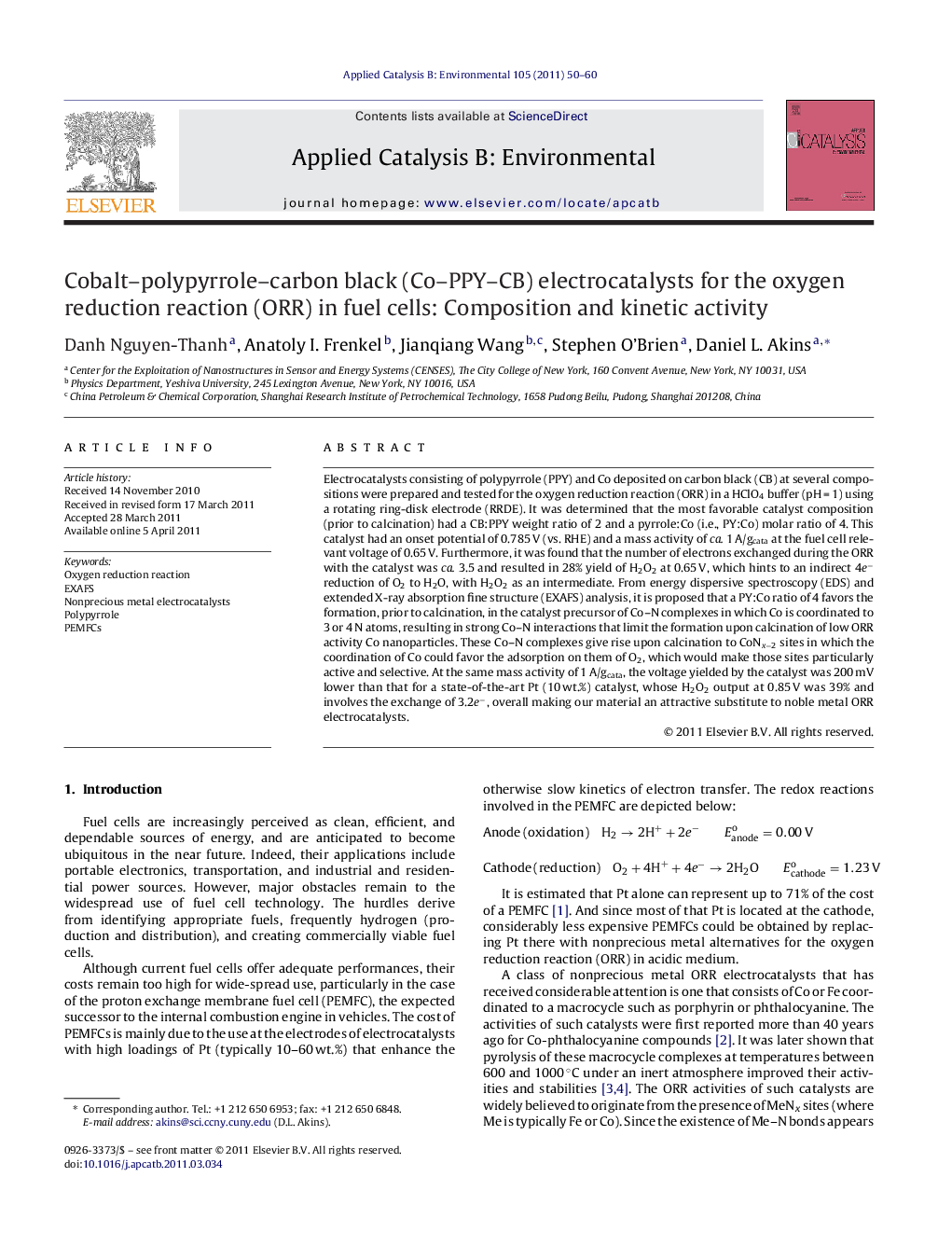| کد مقاله | کد نشریه | سال انتشار | مقاله انگلیسی | نسخه تمام متن |
|---|---|---|---|---|
| 46791 | 46449 | 2011 | 11 صفحه PDF | دانلود رایگان |

Electrocatalysts consisting of polypyrrole (PPY) and Co deposited on carbon black (CB) at several compositions were prepared and tested for the oxygen reduction reaction (ORR) in a HClO4 buffer (pH = 1) using a rotating ring-disk electrode (RRDE). It was determined that the most favorable catalyst composition (prior to calcination) had a CB:PPY weight ratio of 2 and a pyrrole:Co (i.e., PY:Co) molar ratio of 4. This catalyst had an onset potential of 0.785 V (vs. RHE) and a mass activity of ca. 1 A/gcata at the fuel cell relevant voltage of 0.65 V. Furthermore, it was found that the number of electrons exchanged during the ORR with the catalyst was ca. 3.5 and resulted in 28% yield of H2O2 at 0.65 V, which hints to an indirect 4e− reduction of O2 to H2O, with H2O2 as an intermediate. From energy dispersive spectroscopy (EDS) and extended X-ray absorption fine structure (EXAFS) analysis, it is proposed that a PY:Co ratio of 4 favors the formation, prior to calcination, in the catalyst precursor of Co–N complexes in which Co is coordinated to 3 or 4 N atoms, resulting in strong Co–N interactions that limit the formation upon calcination of low ORR activity Co nanoparticles. These Co–N complexes give rise upon calcination to CoNx−2 sites in which the coordination of Co could favor the adsorption on them of O2, which would make those sites particularly active and selective. At the same mass activity of 1 A/gcata, the voltage yielded by the catalyst was 200 mV lower than that for a state-of-the-art Pt (10 wt.%) catalyst, whose H2O2 output at 0.85 V was 39% and involves the exchange of 3.2e−, overall making our material an attractive substitute to noble metal ORR electrocatalysts.
Figure optionsDownload as PowerPoint slideHighlights
► The ORR activity of Co–PPY–CB electrocatalysts significantly varies with composition.
► A CB:PPY ratio (wt.) of 2 maximizes N presence on CB while preserving the porosity.
► A pyrrole:Co ratio (mol.) of 4 leads to complexes with Co coordinated to 3–4 N.
► Calcination of those complexes yields CoNx−2 sites that are ORR active and selective.
► A catalyst with such ratios compares favorably to a Pt one, with a 200 mV loss.
Journal: Applied Catalysis B: Environmental - Volume 105, Issues 1–2, 9 June 2011, Pages 50–60